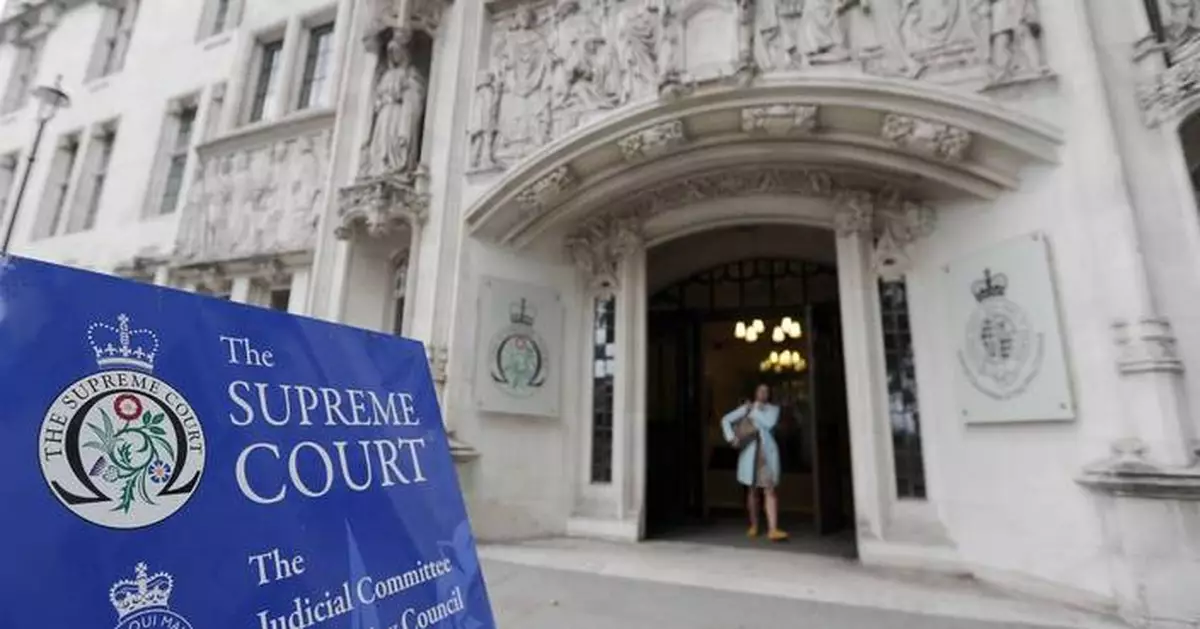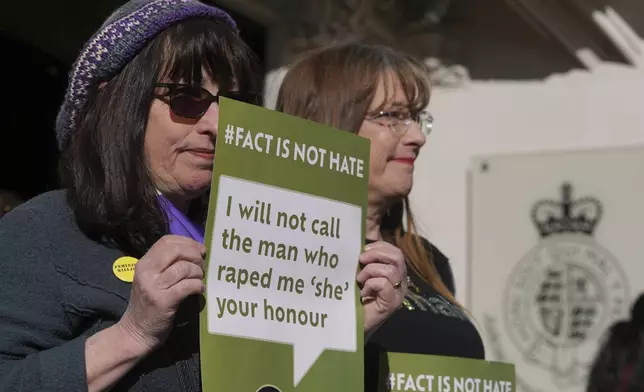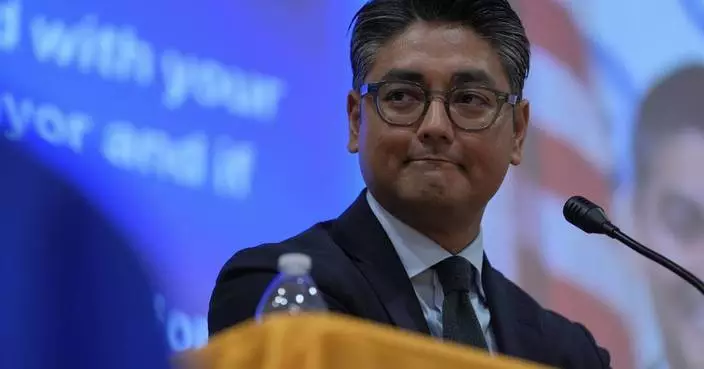LONDON (AP) — The U.K. Supreme Court ruled Wednesday that a woman is someone born biologically female, excluding transgender people from the legal definition in a long-running dispute between a feminist group and the Scottish government.
The court said the unanimous ruling shouldn't be seen as victory by one side, but several women's groups that supported the appeal celebrated outside court and hailed it as a major win in their effort to protect spaces designated for women.
Click to Gallery
Marion Calder, center, and Susan Smith, left, from For Women Scotland, celebrate outside after the U.K. Supreme Court ruled that a woman is someone born biologically female, excluding transgender people from the legal definition in a long-running dispute between the feminist group and the Scottish government, in London Wednesday, April 16, 2025. (AP Photo/Kin Cheung)
Marion Calder, right, and Susan Smith, left, from For Women Scotland, celebrate outside after the U.K. Supreme Court ruled that a woman is someone born biologically female, excluding transgender people from the legal definition in a long-running dispute between the feminist group and the Scottish government, in London Wednesday, April 16, 2025. (AP Photo/Kin Cheung)
Women's rights activists celebrate outside the Supreme Court to challenge gender recognition laws, in London, Wednesday, April 16, 2025. (AP Photo/Kin Cheung)
Marion Calder and Susan Smith from For Women Scotland, celebrate outside the Supreme Court to challenge gender recognition laws, in London, Wednesday, April 16, 2025. (AP Photo/Kin Cheung)
Marion Calder and Susan Smith from For Women Scotland, celebrate outside the Supreme Court to challenge gender recognition laws, in London, Wednesday, April 16, 2025. (AP Photo/Kin Cheung)
Activists queue to enter the Supreme Court to challenge gender recognition laws, in London, Wednesday, April 16, 2025. (AP Photo/Kin Cheung)
Women's rights activists hold placards outside the Supreme Court to challenge gender recognition laws, in London, Wednesday, April 16, 2025. (AP Photo/Kin Cheung)
Women's rights activists hold placards outside the Supreme Court to challenge gender recognition laws, in London, Wednesday, April 16, 2025. (AP Photo/Kin Cheung)
Women's rights activists hold placards outside the Supreme Court to challenge gender recognition laws, in London, Wednesday, April 16, 2025. (AP Photo/Kin Cheung)
Women's rights activists hold placards outside the Supreme Court to challenge gender recognition laws, in London, Wednesday, April 16, 2025. (AP Photo/Kin Cheung)
FILE - The entrance of the Supreme Court in London, Wednesday, Sept. 11, 2019. (AP Photo/Frank Augstein, File)
“Everyone knows what sex is and you can’t change it,” said Susan Smith, co-director of For Women Scotland, which brought the case. “It’s common sense, basic common sense, and the fact that we have been down a rabbit hole where people have tried to deny science and to deny reality, and hopefully this will now see us back to reality.”
Five judges ruled that the U.K. Equality Act means trans women can be excluded from some groups and single-sex spaces such as changing rooms, homeless shelters, swimming areas and medical or counseling services provided only to women.
The court said the ruling did not remove rights for trans people still protected from discrimination under U.K. law. But it said certain protections should apply only to biological females and not transgender women.
The ruling brings some clarity in the U.K. to an issue that has polarized politics in some other countries, particularly the United States. Republican-controlled states over the last four years have been banning gender-affirming care for minors, barring transgender women and girls from sports competitions that align with their gender and restricting which public bathrooms transgender people can use.
Since returning to office in January, President Donald Trump has signed orders to define the sexes as only male and female and has tried to kick transgender service members out of the military, block federal spending on gender-affirming care for those under 19 and block their sports participation nationally. His efforts are being challenged in court.
The U.K. case stems from a 2018 law passed by the Scottish Parliament saying 50% of the membership of the boards of Scottish public bodies should be women. Transgender women with gender recognition certificates were to be included in meeting the quota.
“Interpreting ‘sex’ as certificated sex would cut across the definitions of ‘man’ and ‘woman’ ... and, thus, the protected characteristic of sex in an incoherent way,” Justice Patrick Hodge said in summarizing the case. “It would create heterogeneous groupings.”
The campaign group Scottish Trans said it was “shocked and disappointed” by the ruling, saying it would undermine legal protections for transgender people enshrined in the 2004 Gender Recognition Act.
Maggie Chapman, a Green Party lawmaker in the Scottish Parliament, said the ruling was “deeply concerning” for human rights and "a huge blow to some of the most marginalized people in our society.”
“Trans people have been cynically targeted and demonized by politicians and large parts of the media for far too long,” she said. “This has contributed to attacks on longstanding rights and attempts to erase their existence altogether.”
Groups that had challenged the Scottish government uncorked a bottle of champagne outside the court and sang, “Women’s rights are human rights.”
“The court has given us the right answer: the protected characteristic of sex — male and female — refers to reality, not to paperwork," said Maya Forstater of the group Sex Matters. In 2022, an employment tribunal ruled that she had been the victim of discrimination when she lost out on a job after posting gender-critical views online.
The British government welcomed the latest ruling, saying it would provide clarity and confidence for women.
“Single-sex spaces are protected in law and will always be protected by this government,” it said.
Scotland’s semi-autonomous government said it accepted the judgment.
“We will now engage on the implications of the ruling,” First Minister John Swinney posted on X. “Protecting the rights of all will underpin our actions.”
For Women Scotland had argued that the Scottish officials' redefinition of woman went beyond Parliament’s powers. But Scottish officials then issued new guidance stating that the definition of woman included someone with a gender recognition certificate.
FWS sought to overturn that.
“Not tying the definition of sex to its ordinary meaning means that public boards could conceivably comprise of 50% men and 50% men with certificates, yet still lawfully meet the targets for female representation,” the group’s director Trina Budge said previously.
The challenge was rejected by a court in 2022, but the group was granted permission last year to take its case to the Supreme Court.
Aidan O’Neill, a lawyer for FWS, told the Supreme Court judges — three men and two women — that under the Equality Act “sex” should refer to biological sex as understood “in ordinary, everyday language.”
“Our position is your sex, whether you are a man or a woman or a girl or a boy, is determined from conception in utero, even before one’s birth, by one’s body,” he said. “It is an expression of one’s bodily reality. It is an immutable biological state.”
The women’s rights group counted among its supporters author J.K. Rowling, who reportedly donated tens of thousands of pounds to back its work. The “Harry Potter” writer has been vocal in arguing that the rights for trans women should not come at the expense of those who are born biologically female.
Rowling said she was “so proud” of the “extraordinary, tenacious” For Women Scotland campaigners who took the case on a years-long battle through the courts.
Rowling wrote on X that “in winning, they’ve protected the rights of women and girls across the U.K.”
Opponents, including Amnesty International, said excluding transgender people from sex discrimination protections conflicted with human rights laws.
Amnesty submitted a brief in court saying it was concerned about the deterioration of the rights for trans people in the U.K. and abroad.
“A blanket policy of barring trans women from single-sex services is not a proportionate means to achieve a legitimate aim,” the human rights group said.
Associated Press writers Kwiyeon Ha in London and Geoff Mulvihill in Cherry Hill, New Jersey, contributed to this story.
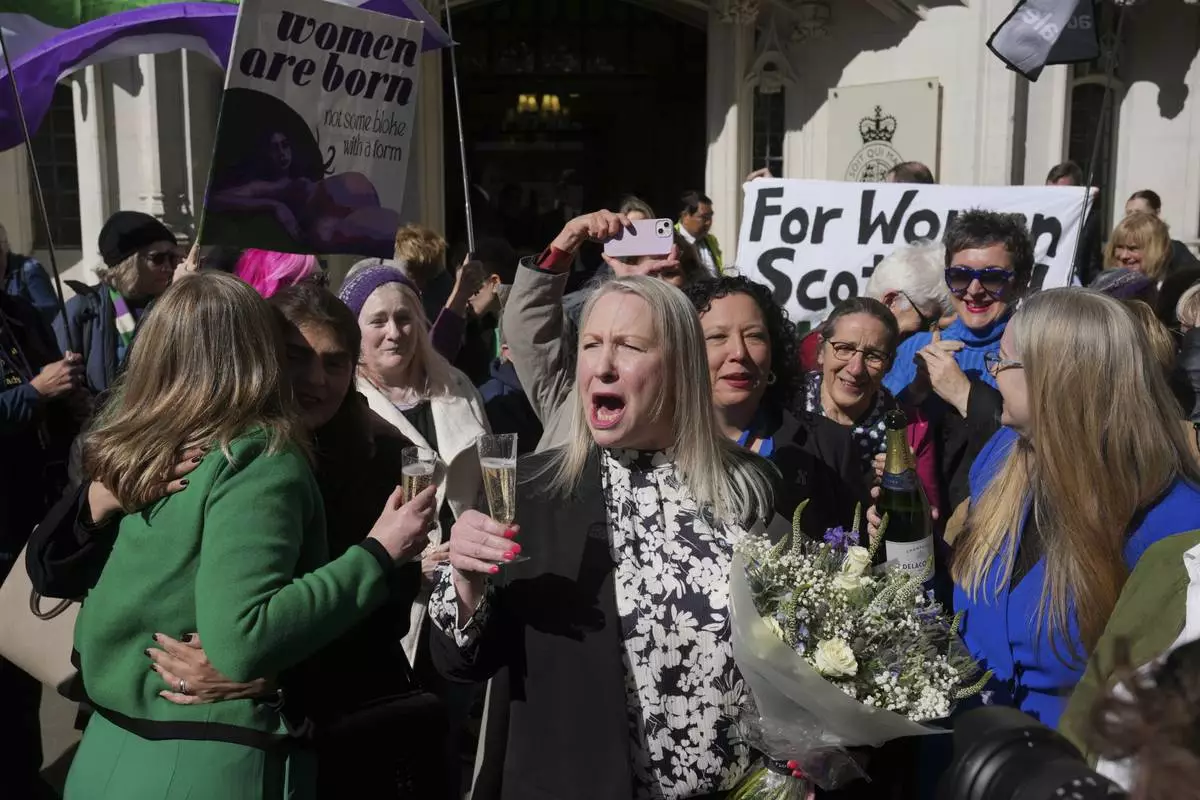
Marion Calder, center, and Susan Smith, left, from For Women Scotland, celebrate outside after the U.K. Supreme Court ruled that a woman is someone born biologically female, excluding transgender people from the legal definition in a long-running dispute between the feminist group and the Scottish government, in London Wednesday, April 16, 2025. (AP Photo/Kin Cheung)
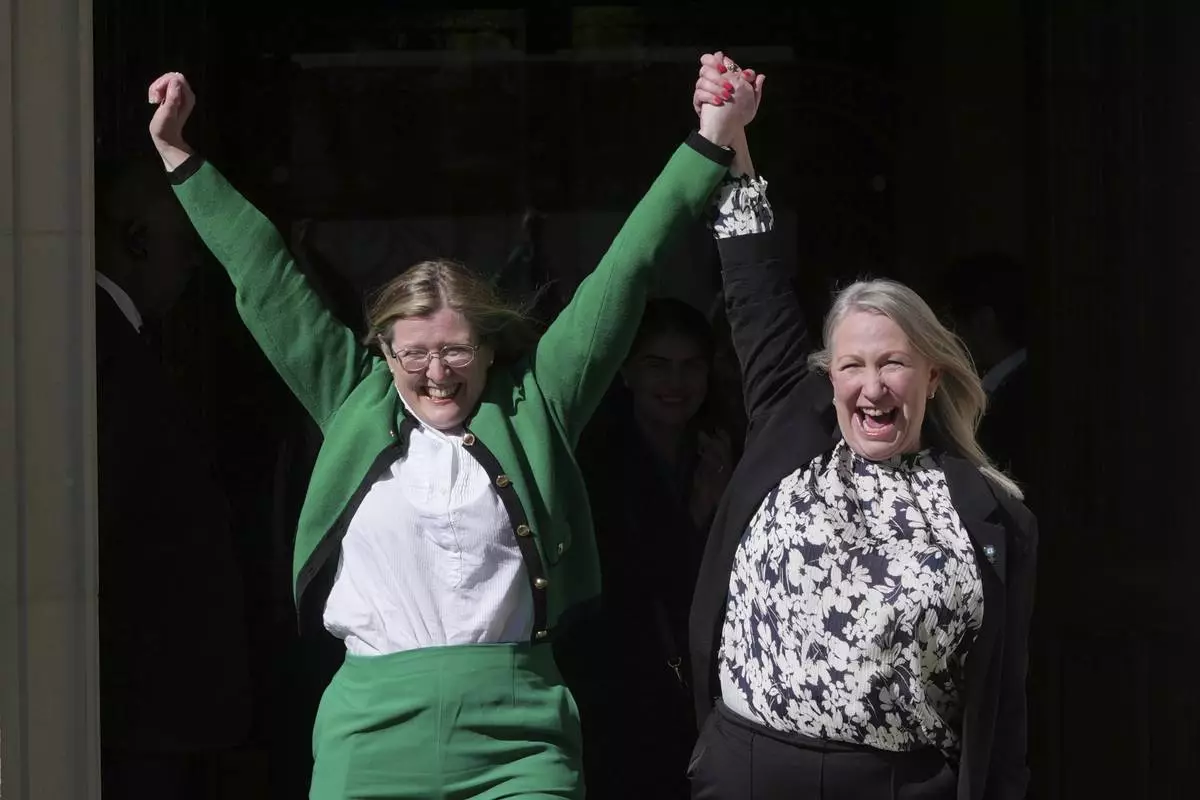
Marion Calder, right, and Susan Smith, left, from For Women Scotland, celebrate outside after the U.K. Supreme Court ruled that a woman is someone born biologically female, excluding transgender people from the legal definition in a long-running dispute between the feminist group and the Scottish government, in London Wednesday, April 16, 2025. (AP Photo/Kin Cheung)
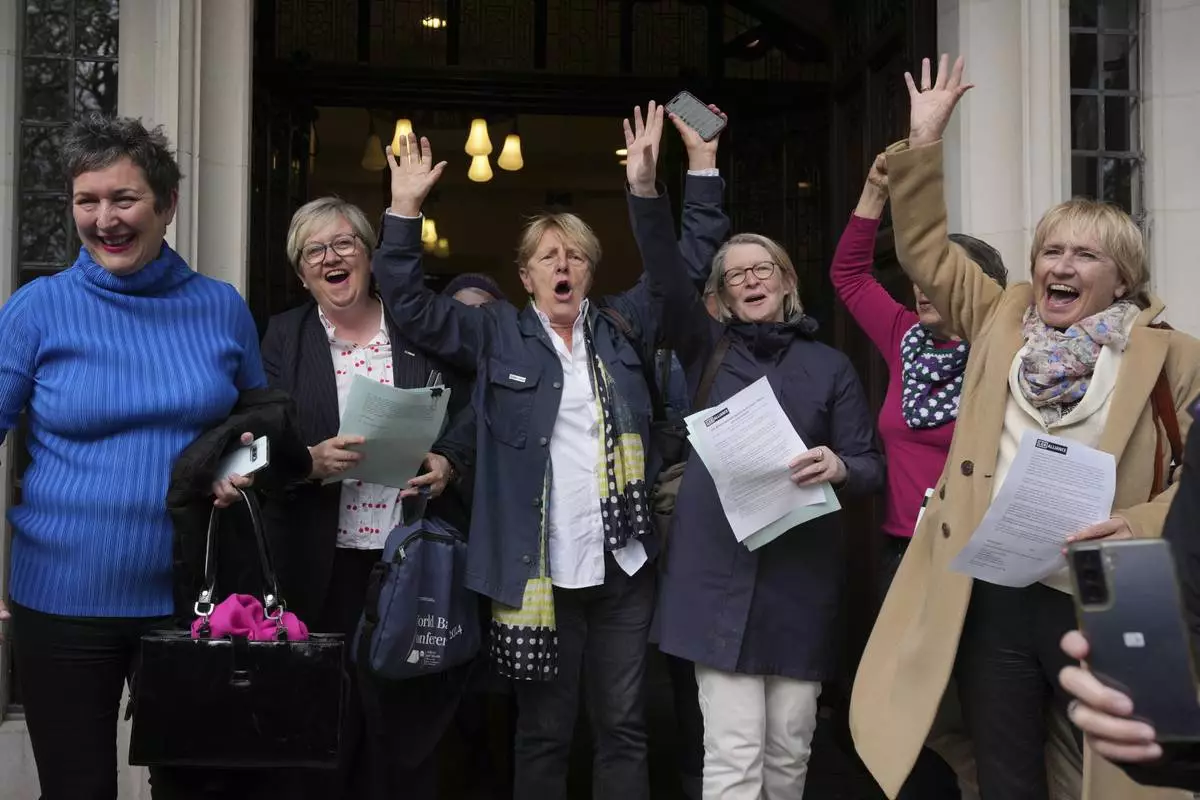
Women's rights activists celebrate outside the Supreme Court to challenge gender recognition laws, in London, Wednesday, April 16, 2025. (AP Photo/Kin Cheung)
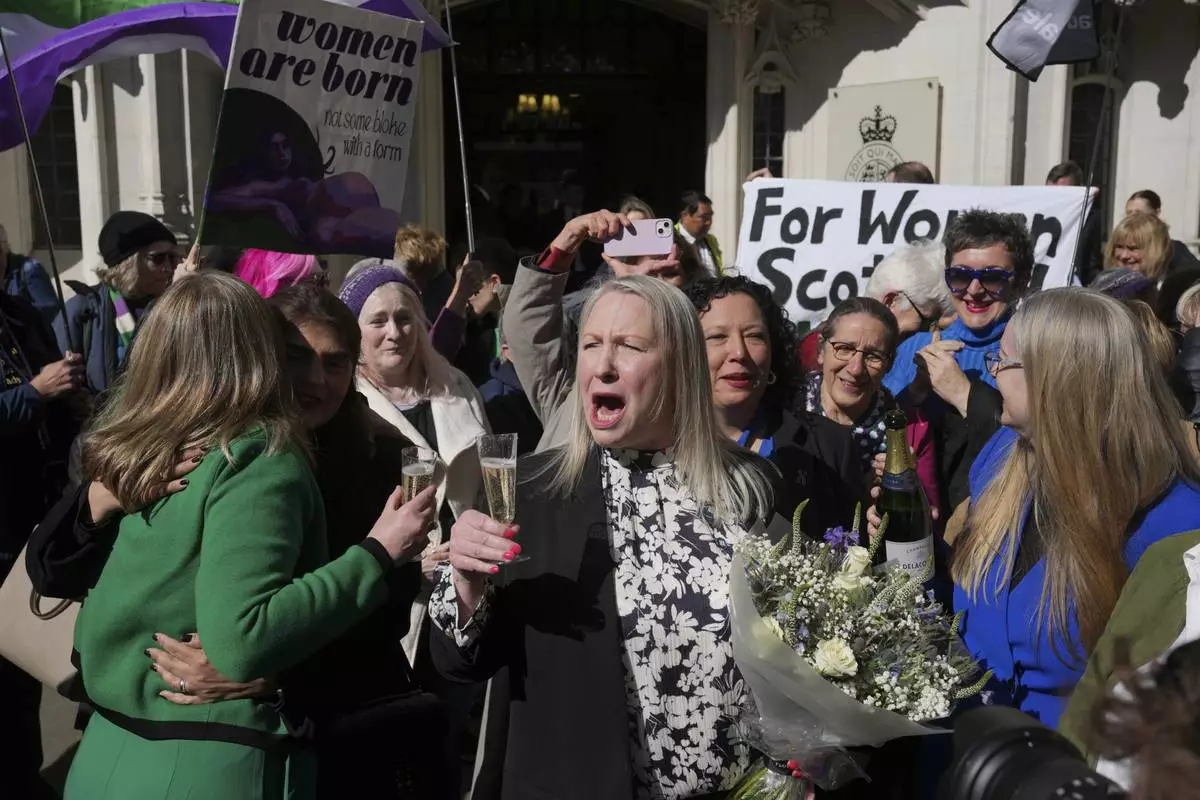
Marion Calder and Susan Smith from For Women Scotland, celebrate outside the Supreme Court to challenge gender recognition laws, in London, Wednesday, April 16, 2025. (AP Photo/Kin Cheung)
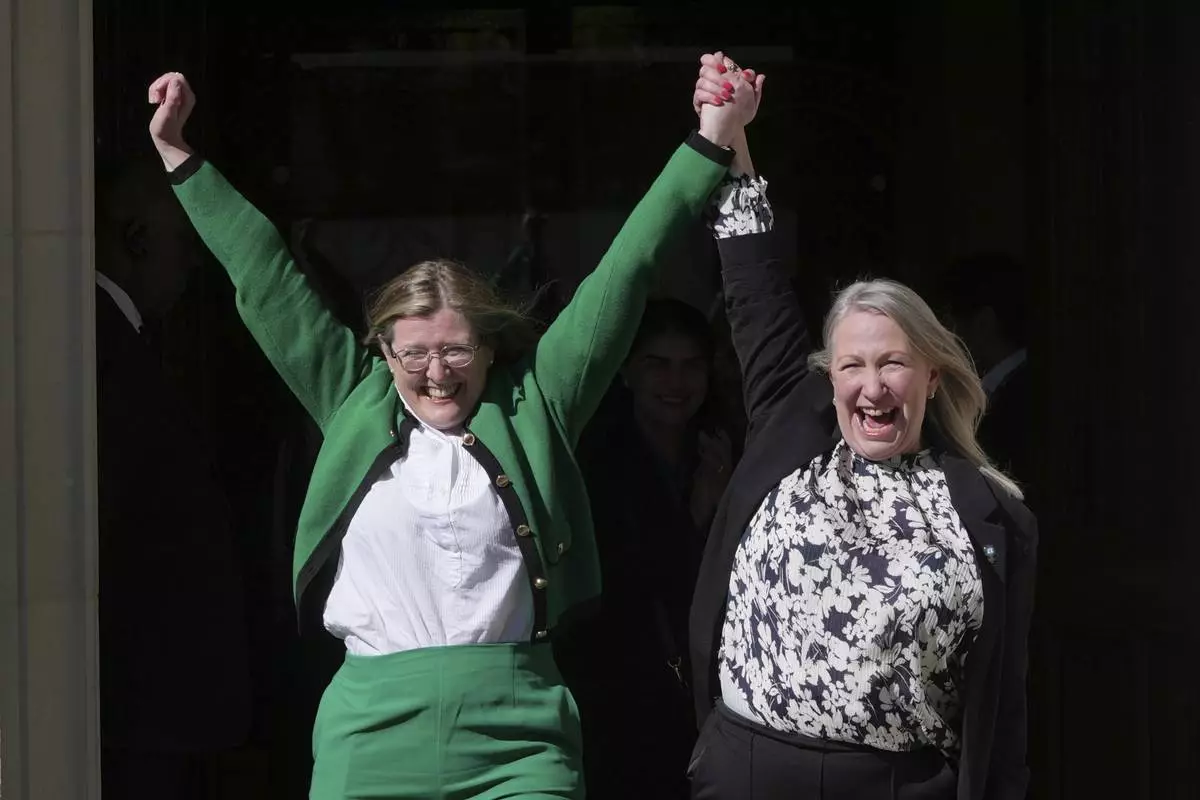
Marion Calder and Susan Smith from For Women Scotland, celebrate outside the Supreme Court to challenge gender recognition laws, in London, Wednesday, April 16, 2025. (AP Photo/Kin Cheung)
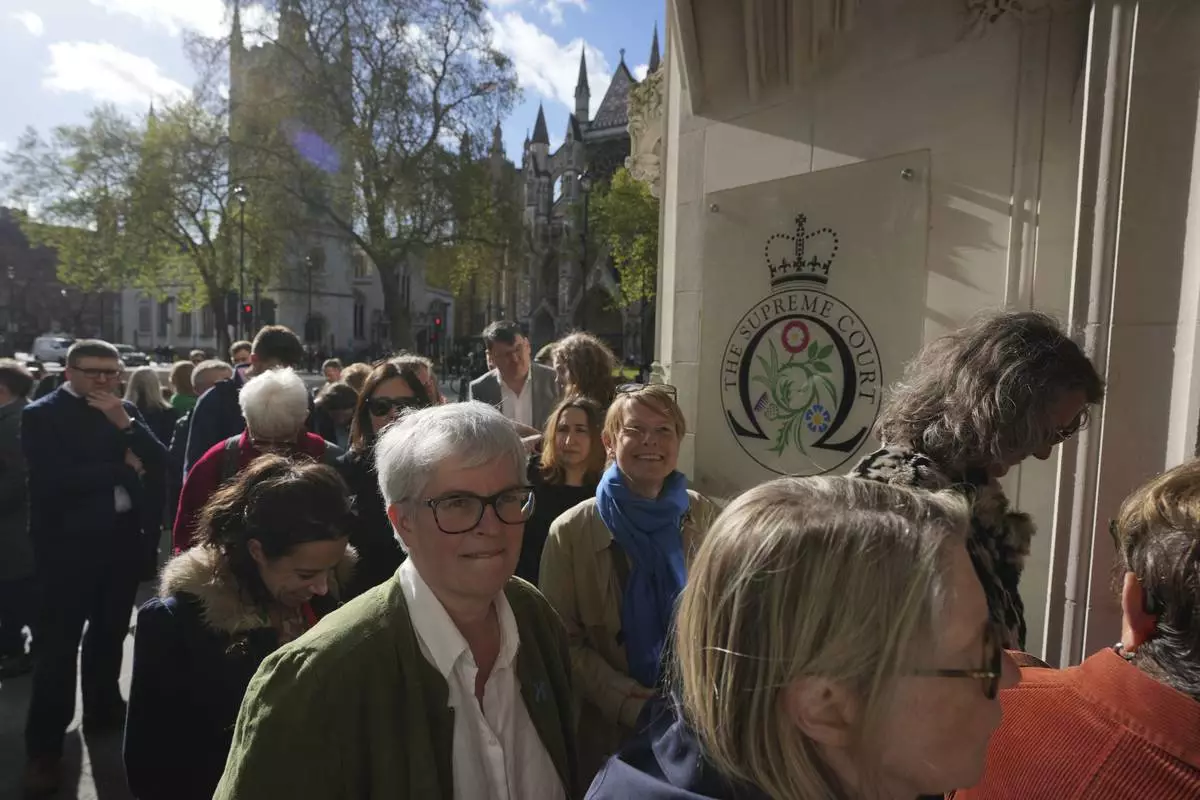
Activists queue to enter the Supreme Court to challenge gender recognition laws, in London, Wednesday, April 16, 2025. (AP Photo/Kin Cheung)
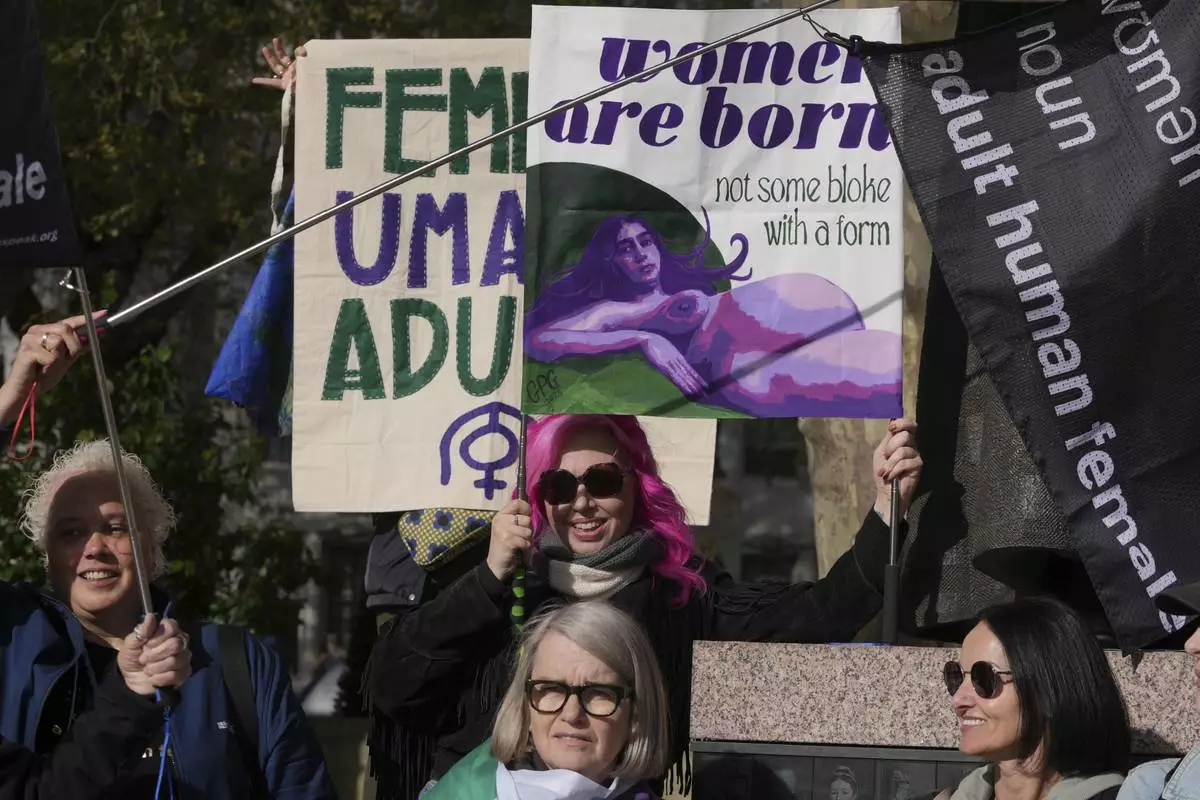
Women's rights activists hold placards outside the Supreme Court to challenge gender recognition laws, in London, Wednesday, April 16, 2025. (AP Photo/Kin Cheung)

Women's rights activists hold placards outside the Supreme Court to challenge gender recognition laws, in London, Wednesday, April 16, 2025. (AP Photo/Kin Cheung)
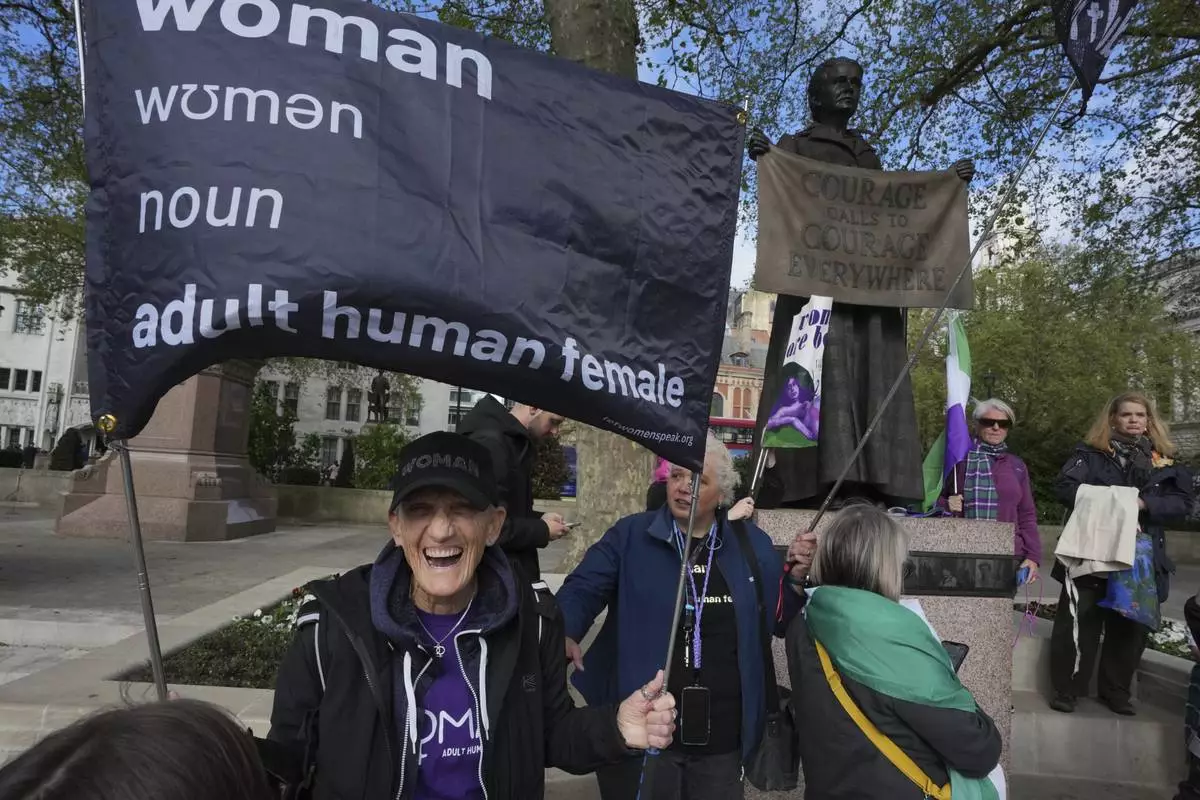
Women's rights activists hold placards outside the Supreme Court to challenge gender recognition laws, in London, Wednesday, April 16, 2025. (AP Photo/Kin Cheung)
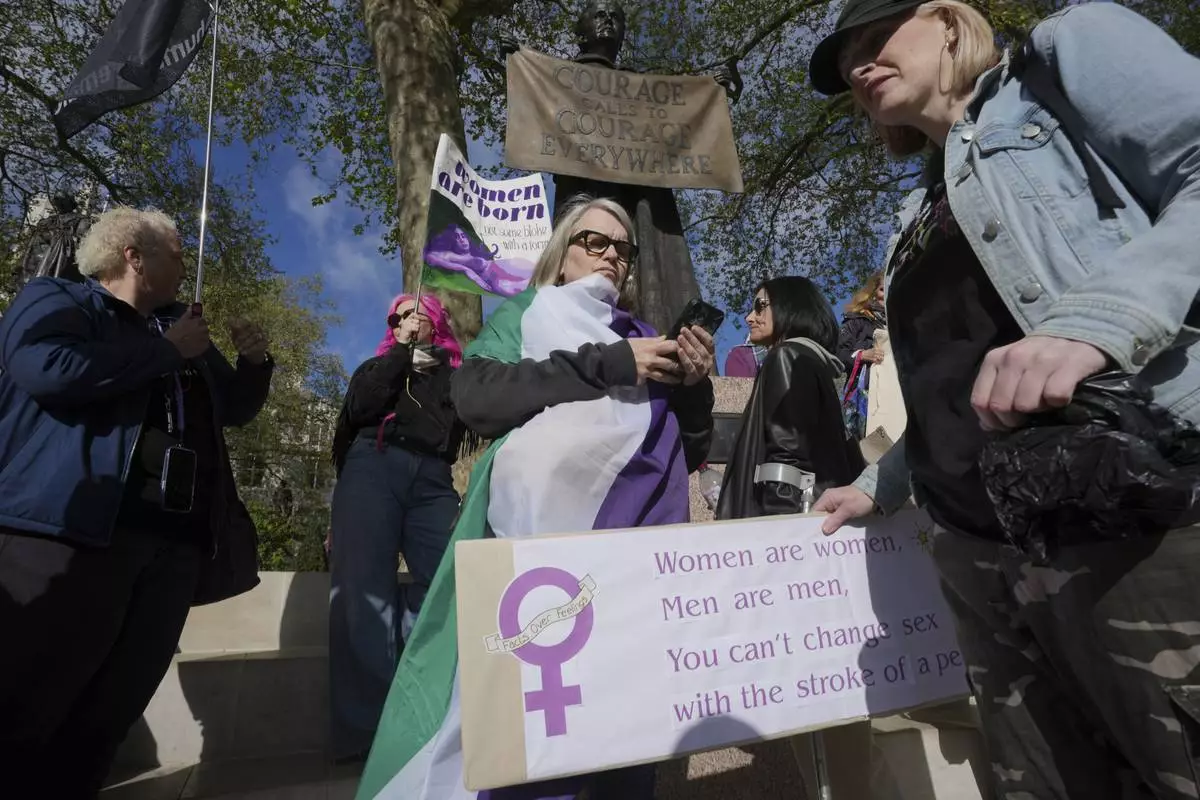
Women's rights activists hold placards outside the Supreme Court to challenge gender recognition laws, in London, Wednesday, April 16, 2025. (AP Photo/Kin Cheung)
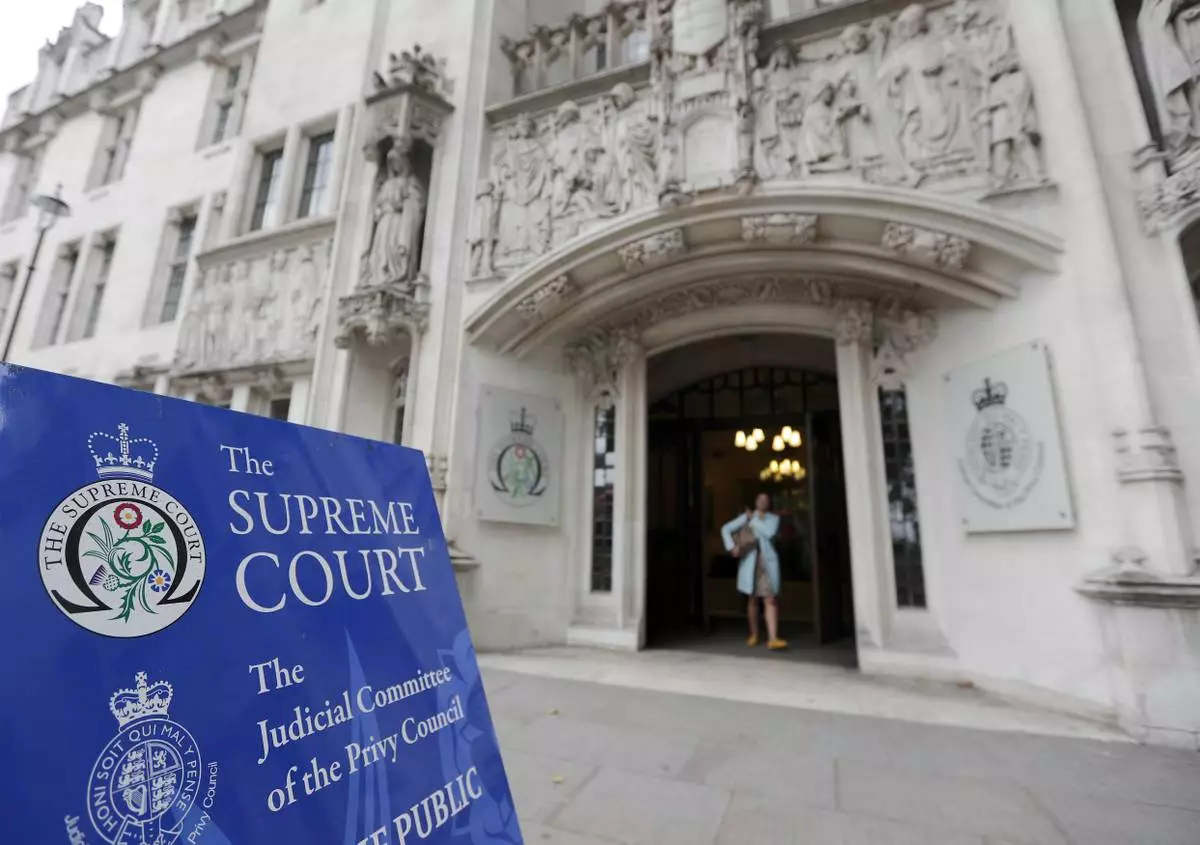
FILE - The entrance of the Supreme Court in London, Wednesday, Sept. 11, 2019. (AP Photo/Frank Augstein, File)
VATICAN CITY (AP) — “Conclave” the film may have introduced moviegoers to the spectacular ritual and drama of a modern conclave, but the periodic voting to elect a new pope has been going on for centuries and created a whole genre of historical trivia.
Here are some facts about conclaves past, derived from historical studies including Miles Pattenden's “Electing the Pope in Early Modern Italy, 1450–1700,” and interviews with experts including Elena Cangiano, an archeologist at Viterbo's Palazzo dei Papi (Palace of the Popes).
In the 13th century, it took almost three years — 1,006 days to be exact — to choose Pope Clement IV's successor, making it the longest conclave in the Catholic Church’s history. It's also where the term conclave comes from — "under lock and key," because the cardinals who were meeting in Viterbo, north of Rome, took so long the town's frustrated citizens locked them in the room.
The secret vote that elected Pope Gregory X lasted from November 1268 to September 1271. It was the first example of a papal election by “compromise,” after a long struggle between supporters of two main geopolitical medieval factions — those faithful to the papacy and those supporting the Holy Roman Empire.
Gregory X was elected only after Viterbo residents tore the roof off the building where the prelates were staying and restricted their meals to bread and water to pressure them to come to a conclusion. Hoping to avoid a repeat, Gregory X decreed in 1274 that cardinals would only get “one meal a day” if the conclave stretched beyond three days, and only “bread, water and wine” if it went beyond eight. That restriction has been dropped.
Before 1274, there were times when a pope was elected the same day as the death of his predecessor. After that, however, the church decided to wait at least 10 days before the first vote. Later that was extended to 15 days to give all cardinals time to get to Rome. The quickest conclave observing the 10-day wait rule appears to have been the 1503 election of Pope Julius II, who was elected in just a few hours, according to Vatican historian Ambrogio Piazzoni. In more recent times, Pope Francis was elected in 2013 on the fifth ballot, Benedict XVI won in 2005 on the fourth and Pope Pius XII won on the third in 1939.
The first conclave held under Michelangelo's frescoed ceiling in the Sistine Chapel was in 1492. Since 1878, the world-renowned chapel has become the venue of all conclaves. “Everything is conducive to an awareness of the presence of God, in whose sight each person will one day be judged,” St. John Paul II wrote in his 1996 document regulating the conclave, “Universi Dominici Gregis.” The cardinals sleep a short distance away in the nearby Domus Santa Marta hotel or a nearby residence.
Most conclaves were held in Rome, with some taking place outside the Vatican walls. Four were held in the Pauline Chapel of the papal residence at the Quirinale Palace, while some 30 others were held in St. John Lateran Basilica, Santa Maria Sopra Minerva or other places in Rome. On 15 occasions they took place outside Rome and the Vatican altogether, including in Viterbo, Perugia, Arezzo and Venice in Italy, and Konstanz, Germany, and Lyon, France.
Between 1378-1417, referred to by historians as the Western Schism, there were rival claimants to the title of pope. The schism produced multiple papal contenders, the so-called antipopes, splitting the Catholic Church for nearly 40 years. The most prominent antipopes during the Western Schism were Clement VII, Benedict XIII, Alexander V, and John XXIII. The schism was ultimately resolved by the Council of Constance in 1417, which led to the election of Martin V, a universally accepted pontiff.
The cloistered nature of the conclave posed another challenge for cardinals: staying healthy. Before the Domus Santa Marta guest house was built in 1996, cardinal electors slept on cots in rooms connected to the Sistine Chapel. Conclaves in the 16th and 17th centuries were described as “disgusting” and “badly smelling,” with concern about disease outbreaks, particularly in summer, according to historian Miles Pattenden. “The cardinals simply had to have a more regular and comfortable way of living because they were old men, many of them with quite advanced disease,” Pattenden wrote. The enclosed space and lack of ventilation further aggravated these issues. Some of the electors left the conclave sick, often seriously.
Initially, papal elections weren’t as secretive, but concerns about political interference soared during the longest conclave in Viterbo. Gregory X decreed that cardinal electors should be locked in seclusion, “cum clave” (with a key), until a new pope was chosen. The purpose was to create a totally secluded environment where the cardinals could focus on their task, guided by God’s will, without any political interference or distractions. Over the centuries, various popes have modified and reinforced the rules surrounding the conclave, emphasizing the importance of secrecy.
Pope John XII was just 18 when he was elected in 955. The oldest popes were Pope Celestine III (elected in 1191) and Celestine V (elected in 1294) who were both nearly 85. Benedict XVI was 78 when he was elected in 2005.
There is no requirement that a pope be a cardinal, but that has been the case for centuries. The last time a pope was elected who wasn’t a cardinal was Urban VI in 1378. He was a monk and archbishop of Bari. While the Italians have had a stranglehold on the papacy over centuries, there have been many exceptions aside from John Paul II (Polish in 1978) and Benedict XVI (German in 2005) and Francis (Argentine in 2013). Alexander VI, elected in 1492, was Spanish; Gregory III, elected in 731, was Syrian; Adrian VI, elected in 1522, was from the Netherlands.
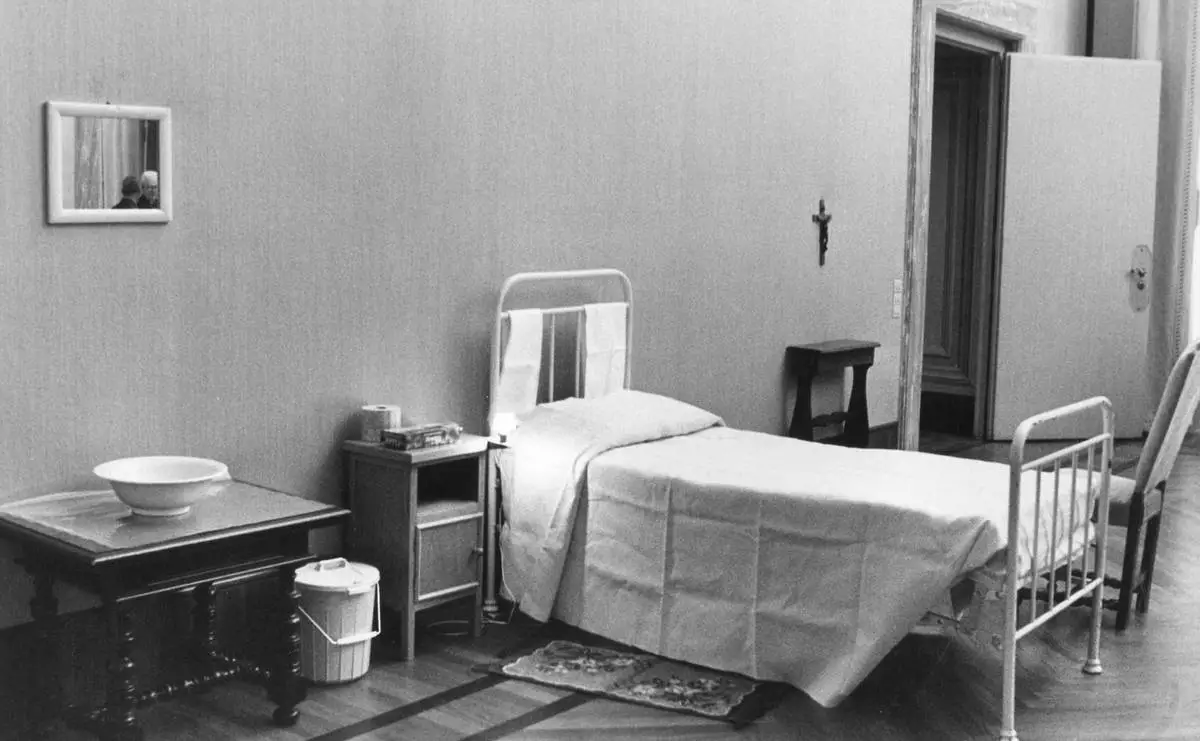
FILE - One of the cells in which a Cardinal will live during the Conclave, at the Vatican, Aug. 23, 1978. (AP Photo, File)
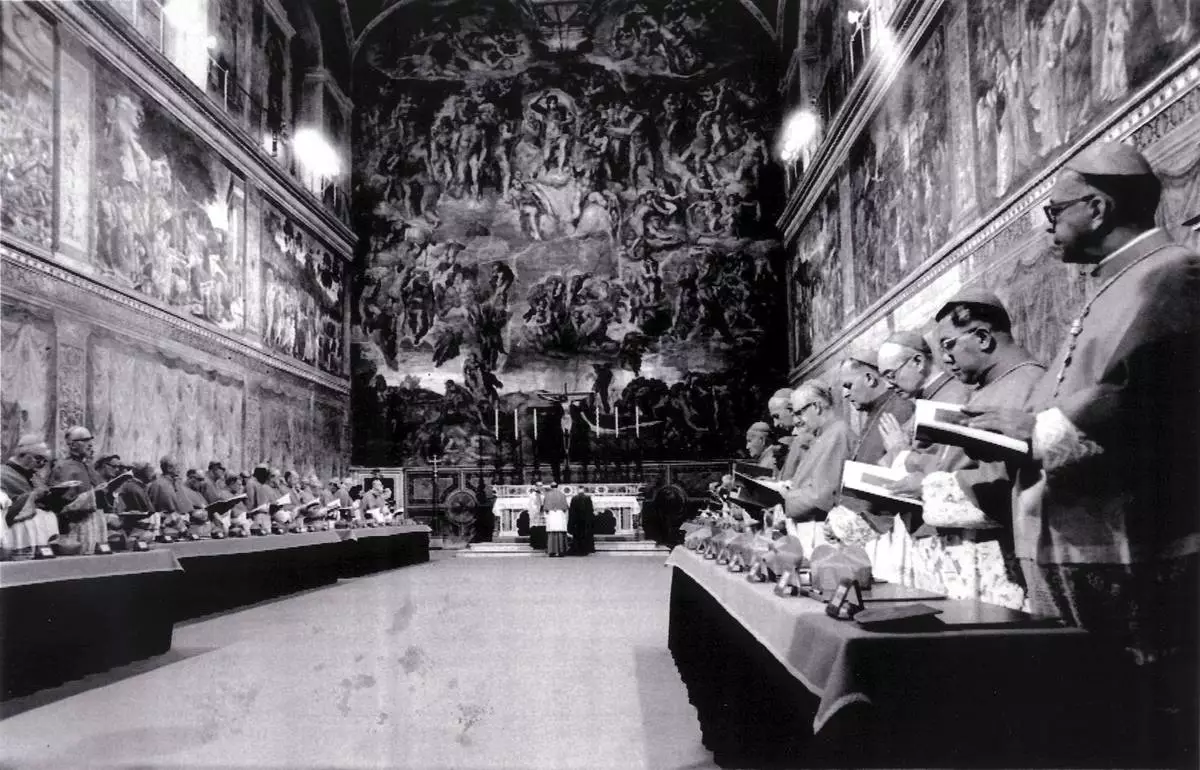
FILE - Cardinals stand in prayer inside the Sistine Chapel after they entered the conclave area for electing the successor of late John Paul I. In the background on the wall Michelangelo's famous fresco "The Last Judgement", in this Oct. 14, 1978 file photo. (AP Photo/Pool, File)
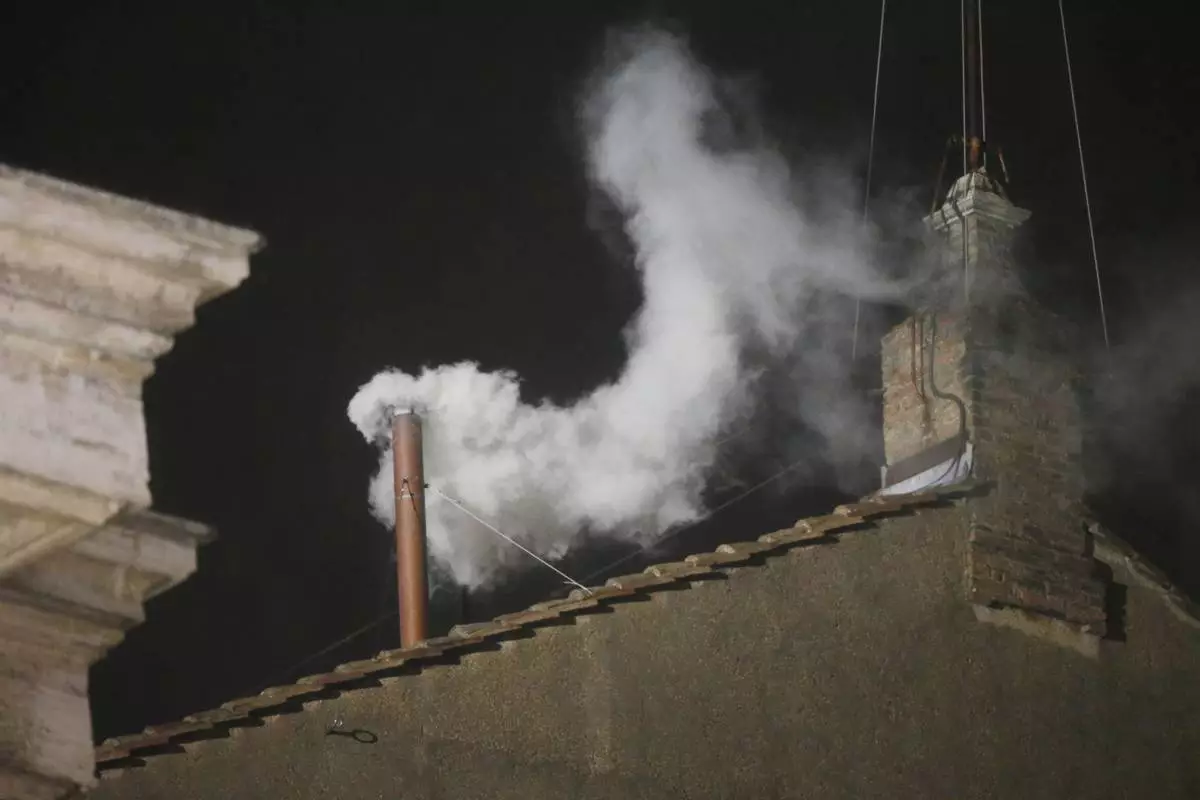
FILE - White smoke is seen billowing out from the chimney of the Sistine Chapel and announcing that a new pope has been elected on Wednesday, March 13, 2013. (AP Photo/Gregorio Borgia, File)
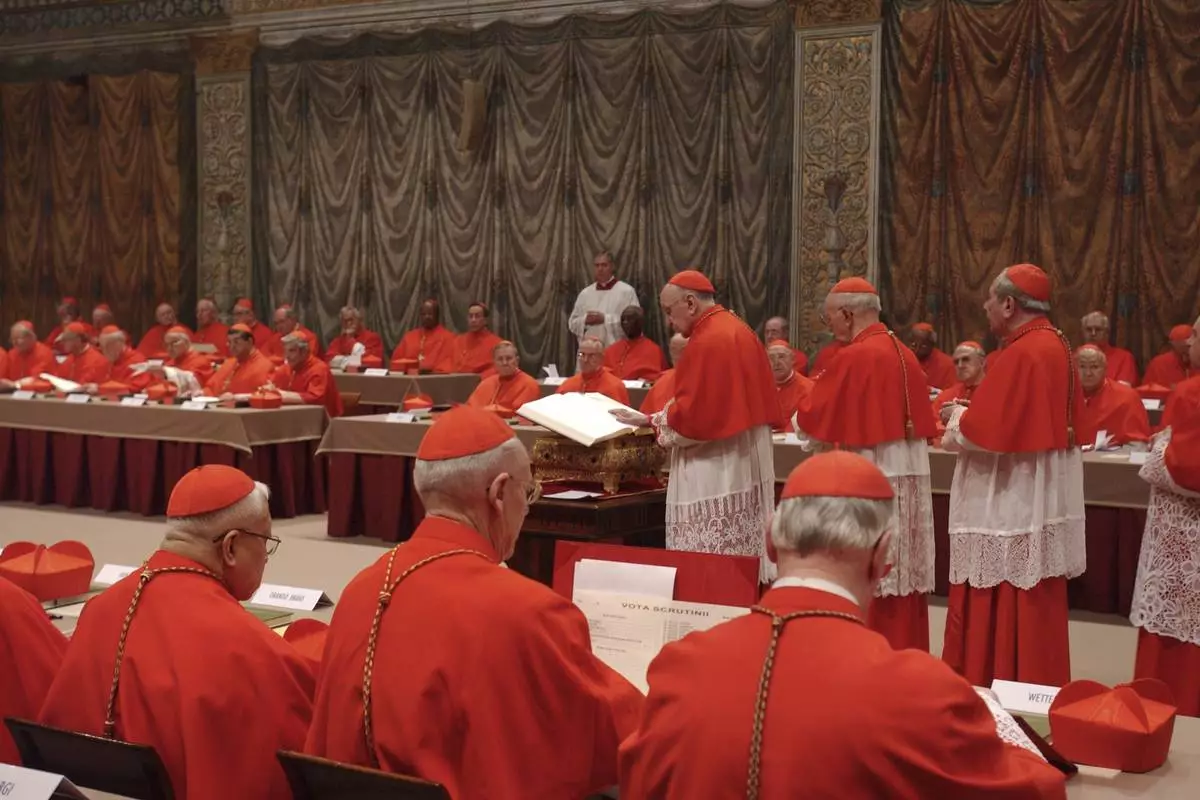
FILE - Italian Cardinal Giacomo Biffi, center, takes an oath at the beginning of the conclave to elect the next pope in the Sistine Chapel at the Vatican, Monday, April 18, 2005. (AP Photo/Osservatore Romano via AP, File)
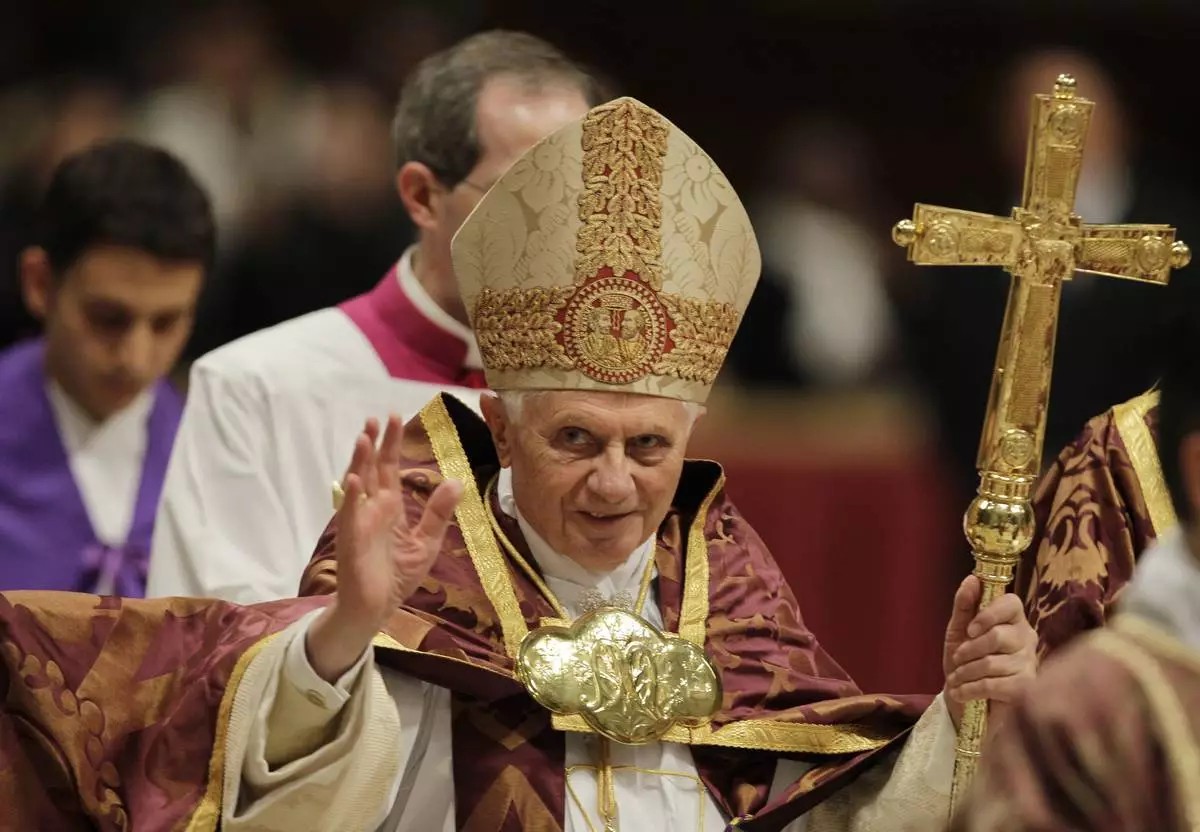
FILE - Pope Benedict XVI blesses the faithful as he arrives at St. Peter's Basilica in the Vatican, Dec. 16, 2010. (AP Photo/Alessandra Tarantino, File)
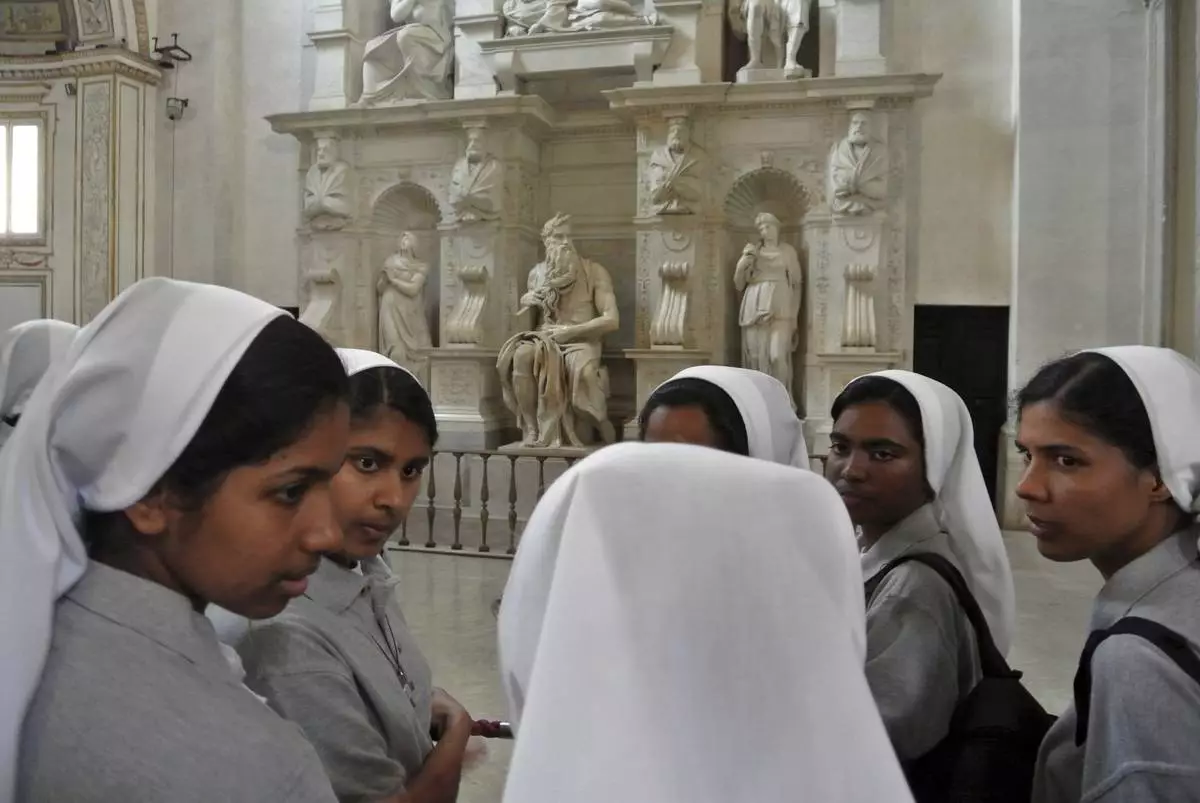
FILE - Nuns talk in front of Italian Renaissance artist Michelangelo Buonarroti's Moses statue, part of a funerary monument he designed for Pope Julius II inside San Pietro in Vincoli Basilica in Rome, July 2, 2013. (AP Photo/Gregorio Borgia, File)
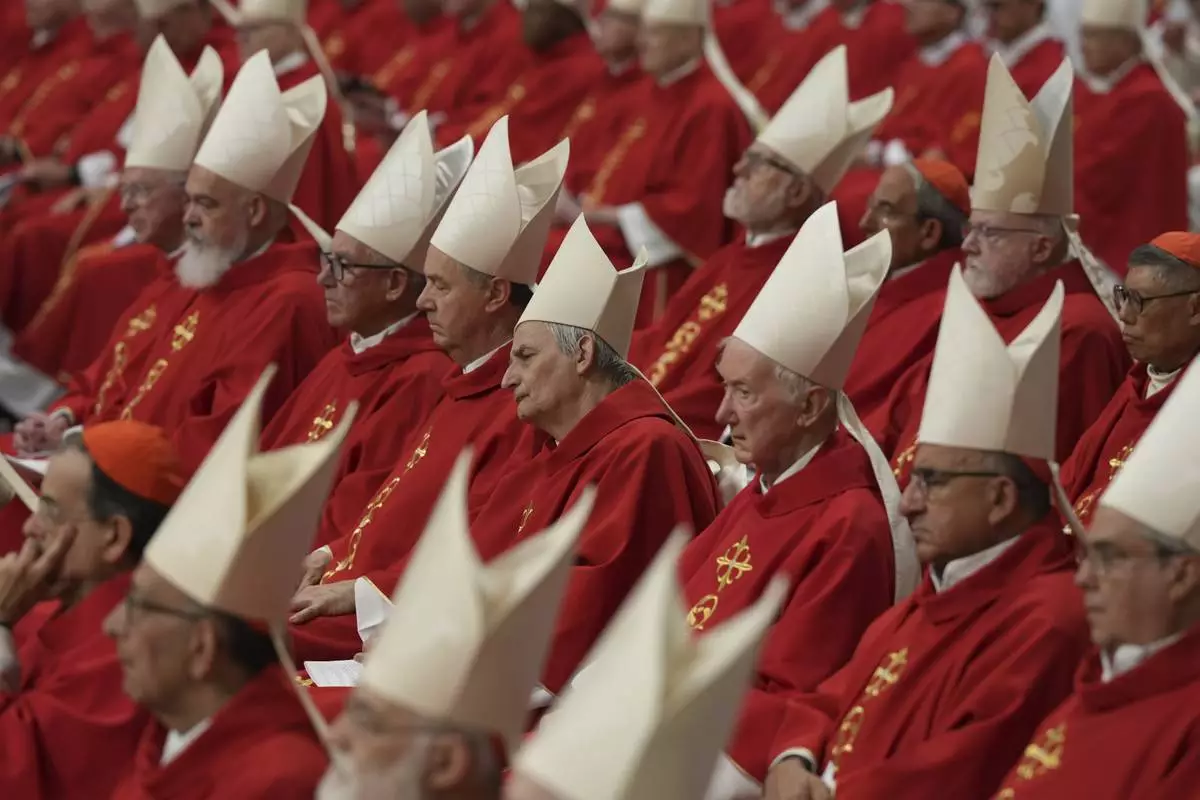
Cardinal Matteo Zuppi, centre, attends a mass on the third of nine days of mourning for late Pope Francis, in St. Peter's Basilica at the Vatican, Monday, April 28, 2025. (AP Photo/Andrew Medichini)
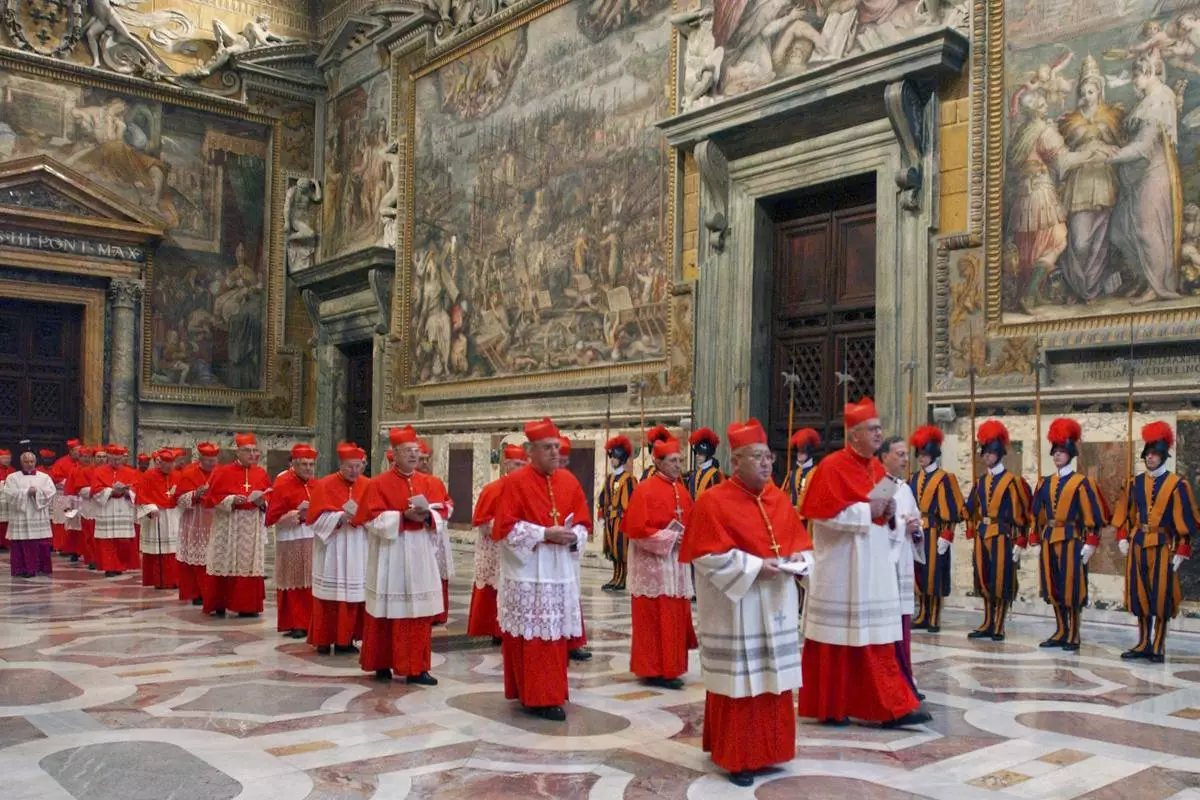
FILE - Cardinals walk in procession to the Sistine Chapel at the Vatican, at the beginning of the conclave, April 18, 2005. (Osservatore Romano via AP, File)













